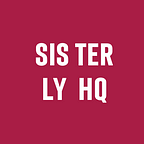Demystifying Web 3.0
Written by Aduragbemi Owoyele
The term Web 3.0. You may have tried to research it, but somehow you end up more confused.
Do you come across words like Blockchain, De-fi, NFT’s, metaverse???
Stay calm! I am here to help you figure it out.
To make sense of Web 3.0, it is important to clarify a common misconception. While most people believe web 3.0 is one single idea, it is not. Instead, it is a big concept with a bunch of little ideas.
To understand Web 3.0, it is necessary to understand its predecessors which are Web 1.0 and Web 2.0.
How did WEB 1.0 come to be?
The timeline for Web 1.0 is said to be between 1991–2004. In this version of the web, the internet was a set of static pages, hence the name Read-only. There was very little interactivity between the internet and the users. We were consumers of the product. Imagine one long Wikipedia page.
The advent of Web 2.0
Research shows that Web 2.0 started in 2004 and still occurs today. In this version, the web wasn’t about observing anymore. It was about participating. This became known as the age of interactivity. We could now read as well as write. This era brought about increased social media usage. Some of the big movers include YouTube, Facebook, and Twitter.
The Promise of WEB 3.0
In the present day, we cannot seem to hear enough about Web 3.0. So what exactly does Web 3.0 mean for us. In simple terms, Web 3.0 means decentralization. Decentralization in Web 3.0 means transferring the power from a central authority into your hands. Imagine a world where you are the owner of your content. An example of this would be putting a post up on YouTube. In Web 2.0 the post would be on one of YouTube servers. Theoretically speaking, in Web 3.0 the post would no longer be on YouTube servers. Instead, it would be on thousands of computers around the world. Implying that the post can no longer be easily taken down. This is just one of the proposed features of Web 3.0.
Let us look at all the features that encompass Web 3.0
· User-controlled data
Generally, users have no idea which data items their apps are collecting. Where they are stored, and whether they’re stored securely. With user-controlled data, users decide which applications access which aspects of their data.
· User monetization control
In Web 2.0, centralized authority determined who gets monetized, but in web 3.0 that would seize to be the case.
· Privacy by default
Privacy by default means when a system or service includes choices for the individual. How much personal data the user shares with others is on the friendliest ones.
· Secure digital identity
Web 3.0 ensures a secure digital identity with data that uniquely describes a person or thing.
· opt into relevant ads
In Web 3.0 there will be a formal opt-in process for receiving follow-up communication, offers, etc.
This table summarizes the key differences between Web 2.0 and Web 3.0
The key question remains whether Web 3.0 is a buzzword or an impending reality. I guess we would find out soon enough.
Till next time,
Xoxo
Aduragbemi is a graduate of the Faculty of Engineering, University of Lagos. She is a product designer and tech enthusiast. Connect with Aduragbemi on LinkedIn and Medium.
Edited by Naimah Akinoso
Naimah is an editor, and product designer with a passion for interior design. She loves cooking, finding new recipes online and trying them. She also loves reading and watching horror movies. Connect with Naimah on Instagram, LinkedIn, Twitter and Dribbble.
Published by Akinsipe Temitope
Temitope is a young storyteller who thinks all stories are worth telling. She loves to inspire people to do what they love and follow their passions, tell their stories, and live in the present moment. Connect with Temitope on Instagram, and Twitter.
